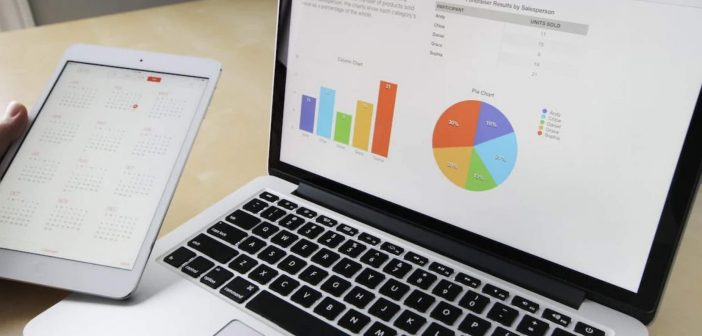In today’s data-driven world, businesses rely heavily on the integration of various tools and platforms to make sense of their data and drive informed decision-making. Two popular names in this realm are Tableau and Salesforce. Individually, these platforms offer powerful capabilities, but when integrated, they become an unstoppable force, empowering organizations to analyze and visualize their data like never before. In this blog post, we will explore how Tableau and Salesforce work together, the benefits of their integration, real-life use cases, and best practices for successful implementation.
Understanding Tableau and Salesforce
Before diving into the integration, let’s briefly understand what Tableau and Salesforce bring to the table individually.
As businesses grow, so do the data they acquire and process. Thus, they need tools that make it easy for them to explore and analyze their data visually. Integrating Tableau or other data visualization tools into the business infrastructure can help users transform complex data into interactive visualizations, dashboards, and reports. The intuitive interfaces of these tools allow users to explore data easily and uncover valuable insights, making them a popular choice among analysts and data enthusiasts.
On the other hand, Salesforce is a comprehensive customer relationship management (CRM) platform that helps businesses manage their customer data, sales processes, marketing campaigns, and more. It provides a centralized hub for customer-related information, enabling sales teams to track leads, manage accounts, and nurture customer relationships effectively.
Benefits of Integrating Tableau and Salesforce
The integration of Tableau and Salesforce offers several advantages for businesses looking to leverage their data to the fullest extent:
Streamlined Data Analysis and Reporting
By integrating Tableau with Salesforce, organizations can seamlessly access and analyze their Salesforce data using Tableau’s advanced visual analytics capabilities. This eliminates the need for manual data exports and imports, saving time and effort while providing real-time insights into sales performance, customer behavior, and other critical metrics.
Enhanced Decision-Making through Real-Time Insights
With the combined power of Tableau and Salesforce, decision-makers can access up-to-date information and gain actionable insights in real time. This empowers them to make informed decisions promptly, whether it’s optimizing sales strategies, identifying market trends, or forecasting future revenue.
Improved Collaboration between Sales and Analytics Teams
Integrating Tableau and Salesforce fosters collaboration between the sales and analytics teams, bridging the gap between data analysis and sales operations. Sales teams can leverage Tableau’s visualizations to understand their customers better, track sales performance, and identify new opportunities. As for analysts, they can provide valuable insights and recommendations based on comprehensive data analysis.
How Tableau and Salesforce Work Together
To integrate Tableau and Salesforce effectively, businesses have several options and methods available. The most common approach is connecting Tableau directly to Salesforce data sources using Tableau’s built-in connectors. These connectors allow users to establish a live connection with their Salesforce data, enabling real-time analysis and visualization without the need for manual data exports.
Once connected, Tableau users can access a wide range of Salesforce objects, including leads, opportunities, accounts, and more. They can drag and drop these objects onto Tableau’s canvas, creating interactive dashboards and reports that provide a holistic view of their sales pipeline, customer behavior, and other key metrics.
Real-Life Use Cases of Tableau and Salesforce Integration
The integration of Tableau and Salesforce opens up endless possibilities for businesses across various industries. Here are a few real-life use cases:
Sales Performance Analysis and Forecasting
By integrating Tableau with Salesforce, sales teams can analyze historical sales data, track individual and team performance, and forecast future revenue accurately. Visualizations can provide insights into sales trends, identify top-performing products or regions, and highlight areas that require improvement.
Customer Segmentation and Targeting
With Tableau’s powerful analytics capabilities, businesses can segment their customer base based on various criteria such as demographics, purchase history, or engagement levels. These segments can then be used to personalize marketing campaigns, improve customer retention strategies, and drive targeted sales efforts.
Marketing Campaign Optimization
By leveraging Tableau’s visualizations, marketers can analyze campaign performance metrics from Salesforce, such as email click rates, conversion rates, and ROI. This data can help optimize marketing campaigns by identifying successful strategies, understanding customer preferences, and allocating resources effectively.
Best Practices for Successful Integration
To ensure a successful integration of Tableau and Salesforce, businesses should consider the following best practices:
Ensuring Data Accuracy and Consistency
Data integrity is crucial when integrating Tableau and Salesforce. It’s essential to establish data quality controls, validate data sources, and implement data governance policies to maintain accurate and consistent information across platforms.
Establishing Data Governance Policies
Businesses should define clear data governance policies, including data access controls, security measures, and data ownership guidelines. This ensures that data is handled responsibly and in compliance with regulations such as GDPR or CCPA.
Training and Skill Development for Users
Providing comprehensive training and support to users is vital for successful integration. This includes training on both Tableau and Salesforce, as well as educating users on how to leverage the integrated capabilities effectively. This ensures that users can harness the full potential of Tableau and Salesforce in their data analysis and decision-making processes.
Regular Maintenance and Updates
As both Tableau and Salesforce evolve over time with new features and updates, it’s important to stay up-to-date with the latest versions and patches. Regular maintenance and updates ensure that the integration remains smooth and that any issues or bugs are addressed promptly.
Collaboration between IT and Business Teams
Successful integration requires close collaboration between IT teams responsible for managing the technical aspects of the integration and the business teams that will be utilizing the integrated solution. Clear communication and alignment on goals and requirements are essential for a seamless integration process.

The integration of Tableau and Salesforce combines the power of data visualization and customer relationship management, enabling businesses to unlock valuable insights and make informed decisions. By streamlining data analysis, providing real-time insights, and fostering collaboration between sales and analytics teams, Tableau and Salesforce offer a robust solution for organizations looking to leverage their data effectively.
The possibilities are endless with Tableau and Salesforce integration, from sales performance analysis and forecasting to customer segmentation and marketing campaign optimization. By following best practices such as ensuring data accuracy, establishing data governance policies, providing user training, and regular maintenance, businesses can maximize the benefits of this power couple and drive success in their data-driven endeavors.




